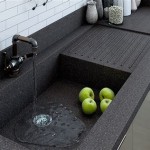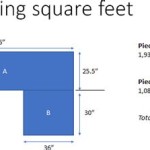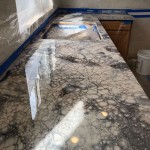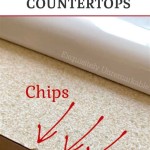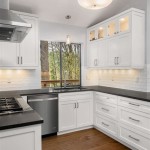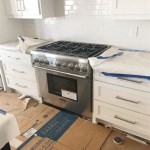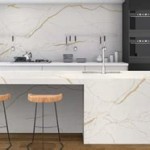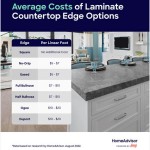Countertop Convection Oven For Baking: A Comprehensive Guide
The countertop convection oven has emerged as a versatile and efficient appliance, particularly valued for its baking capabilities. Its compact size, coupled with the benefits of convection cooking, makes it an attractive alternative to traditional full-sized ovens. This article delves into the features, advantages, considerations, and performance aspects of countertop convection ovens when used specifically for baking, providing a detailed understanding for potential buyers and users.
Convection ovens differ fundamentally from conventional ovens in their heating mechanism. A conventional oven relies on radiant heat from heating elements located at the top and bottom of the oven cavity. This heat naturally rises, creating uneven temperature distribution within the oven. In contrast, a convection oven utilizes a fan to circulate hot air throughout the oven cavity. This forced air circulation ensures a more uniform temperature, leading to more consistent and efficient cooking and baking.
The uniform temperature distribution characteristic of convection ovens offers several distinct advantages for baking. It promotes even browning, reduces hot spots, and often results in faster cooking times. This makes countertop convection ovens particularly well-suited for baking tasks that require consistent results, such as cookies, cakes, pies, and pastries.
Benefits of Using a Countertop Convection Oven for Baking
Countertop convection ovens offer several compelling benefits for bakers, making them a valuable addition to any kitchen. These benefits include space efficiency, energy savings, and superior baking performance.
Space Efficiency: Countertop convection ovens are significantly smaller than traditional ovens, making them ideal for kitchens with limited space. Apartments, smaller homes, or even supplementary cooking spaces can benefit from the compact footprint of these appliances. This allows for the convenience of oven baking without the need for extensive kitchen renovations or oversized appliances.
Energy Savings: Convection ovens generally require less energy than conventional ovens due to their more efficient heating process. The forced air circulation allows for lower cooking temperatures while still achieving the same level of doneness. Furthermore, the smaller cavity of a countertop convection oven heats up more quickly and requires less energy to maintain the desired temperature, resulting in reduced energy consumption and lower utility bills in the long run.
Superior Baking Performance: The hallmark of convection baking is the uniform temperature distribution it provides. This eliminates hot spots and ensures that food cooks evenly on all sides. This is particularly beneficial for baking, where consistent results are crucial. Cakes rise evenly, cookies bake uniformly, and pastries achieve a consistently golden-brown crust. The even heating also helps to prevent burning or undercooking, resulting in more consistently successful baking outcomes.
Beyond these core benefits, countertop convection ovens often offer features that further enhance their baking capabilities. These features can include pre-programmed baking settings, adjustable temperature controls, and multiple rack positions to accommodate different baking needs.
Key Features to Consider When Choosing a Countertop Convection Oven for Baking
When selecting a countertop convection oven for baking, several key features should be carefully considered to ensure the appliance meets specific baking requirements and preferences. These features influence performance, versatility, and ease of use.
Capacity: The capacity of a countertop convection oven is measured in quarts or cubic feet and determines the size of the dishes or baking sheets that can be accommodated. Smaller ovens are suitable for single-person households or small batches of baked goods, while larger ovens can handle larger quantities or accommodate larger baking dishes. Consider the typical baking needs and choose an oven with sufficient capacity to meet those demands. The internal dimensions should be carefully evaluated to ensure commonly used baking pans fit comfortably.
Temperature Range and Control: A wide temperature range and precise temperature control are essential for successful baking. Different recipes require different temperatures, and the ability to accurately set and maintain the desired temperature is crucial for achieving optimal results. Look for ovens with a temperature range that covers all common baking requirements, typically from around 200°F to 450°F. Digital temperature controls offer more precise temperature settings compared to analog controls.
Convection Settings: Not all convection ovens offer the same level of convection control. Some ovens have a simple on/off convection setting, while others offer multiple convection settings, such as convection bake, convection roast, or convection broil. These different settings optimize the convection fan speed and heating element activity for specific cooking or baking tasks. For serious bakers, an oven with multiple convection settings provides greater flexibility and control over the baking process.
Pre-programmed Baking Settings: Many countertop convection ovens come equipped with pre-programmed baking settings for common baked goods, such as cookies, cakes, and pizzas. These settings automatically adjust the temperature and cooking time to optimize the baking process for that particular food. While these settings can be convenient, it is important to note that they may not always be perfect and adjustments may still be necessary based on individual preferences and recipes. However, they can serve as a useful starting point for less experienced bakers.
Rack Positions: The number and placement of rack positions within the oven cavity affect the versatility of the oven. Multiple rack positions allow for the baking of multiple items simultaneously or the adjustment of the distance between the food and the heating elements. This can be particularly useful for baking items that require specific browning levels or cooking times.
Ease of Cleaning: Cleaning a countertop convection oven can be challenging, especially if food spills or splatters inside. Look for ovens with features that make cleaning easier, such as non-stick interiors, removable crumb trays, and dishwasher-safe components. Some ovens also have a self-cleaning function, which can be a significant time-saver.
Baking Performance and Considerations
While countertop convection ovens offer numerous advantages for baking, it is important to understand their specific performance characteristics and considerations to achieve optimal results. These considerations include adjusting recipes, understanding baking times, and managing heat distribution.
Recipe Adjustments: Convection ovens often cook faster than conventional ovens, so it is often necessary to reduce the cooking time or temperature when using a convection oven. A general guideline is to reduce the temperature by 25°F or reduce the cooking time by 20-25%. However, it is important to monitor the food closely and adjust the cooking time or temperature as needed. Some recipes may also require adjustments to the amount of liquid or leavening agent used.
Baking Times: As previously mentioned, convection ovens typically cook faster than conventional ovens. However, the exact baking time will depend on the specific recipe, the size and thickness of the food, and the oven's specific performance characteristics. It is essential to use a kitchen timer and monitor the food closely to prevent overcooking or burning. Checking for doneness using a toothpick or skewer is still a reliable method for many baked goods.
Heat Distribution: While convection ovens provide more even heat distribution than conventional ovens, some variations in temperature may still occur within the oven cavity. This is particularly true for larger ovens or ovens with poorly designed convection systems. To ensure even baking, it is often helpful to rotate the baking sheet halfway through the cooking process. This allows all sides of the food to be exposed to the same amount of heat, resulting in more uniform browning and cooking.
Pan Selection: The type of baking pan used can also affect the baking results in a convection oven. Dark-colored pans tend to absorb more heat and may result in faster browning, while light-colored pans reflect heat and may result in slower browning. Glass pans also tend to heat up more slowly than metal pans. Choose the appropriate type of pan based on the recipe and desired baking outcome. Using parchment paper or silicone baking mats can also help to prevent sticking and promote even browning.
Overcrowding: Overcrowding the oven can impede air circulation and result in uneven baking. Avoid placing too many items in the oven at once, and ensure that there is enough space between items to allow for proper air flow. This is especially important when baking multiple sheets of cookies or muffins.
Through careful consideration of these features, performance characteristics, and baking considerations, users can effectively leverage the capabilities of countertop convection ovens to achieve consistent and delightful baking results. The ability to adapt recipes and techniques to the convection environment is crucial for success.

Mini Oven 9l Countertop Electric Toaster W Adjustable Temp Timer Black

The 4 Best Toaster Ovens Of 2025 Reviews By Wirecutter

Oster Convection 4 Slice Toaster Oven Matte Black And Countertop

Toaster Oven And Countertop Dimensions Kitchenaid

The 4 Best Toaster Ovens Of 2025 Reviews By Wirecutter

Vevor Steam Oven Toaster 12l Countertop Convection 1300w 5 In 1 7 Cooking Modes Air Fryer Combo With Baking Grill Ash Tray For Sandwich Bread Us

Cooking Performance Group Coh D3 A Electric Digital Countertop 3 Tray Half Size Convection Oven With Moisture Injection 120v 1650w

What Is A Convection Oven How To Use It Kitchenaid

65 Liters Kitchen Equipment Countertop Convection Oven For Baking Cookies And Cake In Coffee Restaurants Big Made China Com

Bentism Countertop Convection Oven Toaster Baker Stainless 60qt 120v
See Also

